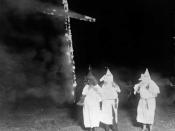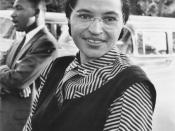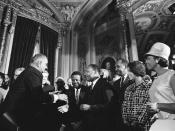Although President Abraham Lincoln issued the Emancipation Proclamation almost one hundred years before the publication of To Kill A Mockingbird in 1960, African Americans were still ensured many of their civil rights. In 1954 the United States Supreme Court's decision in the case of Brown vs. The Board of education declared segregation of public schools illegal. But there was resistance to his ruling and conditions in America remained unchanged at the same time the civil rights movement was begging and its principals were just starting to be herd in the news and courtrooms. These conditions along with Lee's personal experiences of living in the South during the first half of the century became the basis for To Kill A Mockingbird. Having seen first hand how African Americans were denied the rights that the constitution guaranteed all, she felt compelled to expose her readers to that world in order to help them understand the changes that needed to be made.
Harper Lee was born in 1926 in Monroeville, Alabama. Her dad Amasa Coleman Lee served as the model for the main character for To Kill A Mockingbird. Right now she is in Monroeville, Alabama and has been working on her second novel for many years. Her first To Kill A Mockingbird won the Pulitzer Prize. She went to many collages, such as Huntingdon University, Oxford University, and the University of Alabama. Her influences for To Kill A Mockingbird were many of her childhood experiences, like her father.
The publication of To Kill A Mockingbird gave Lee instant success. As a young writer, her story recounts three years in the life of Scout Finch, the six-year-old daughter of Atticus Finch, a small town lawyer. Scouts narrative tells how her father has taken on the case of representing a black man who has...


